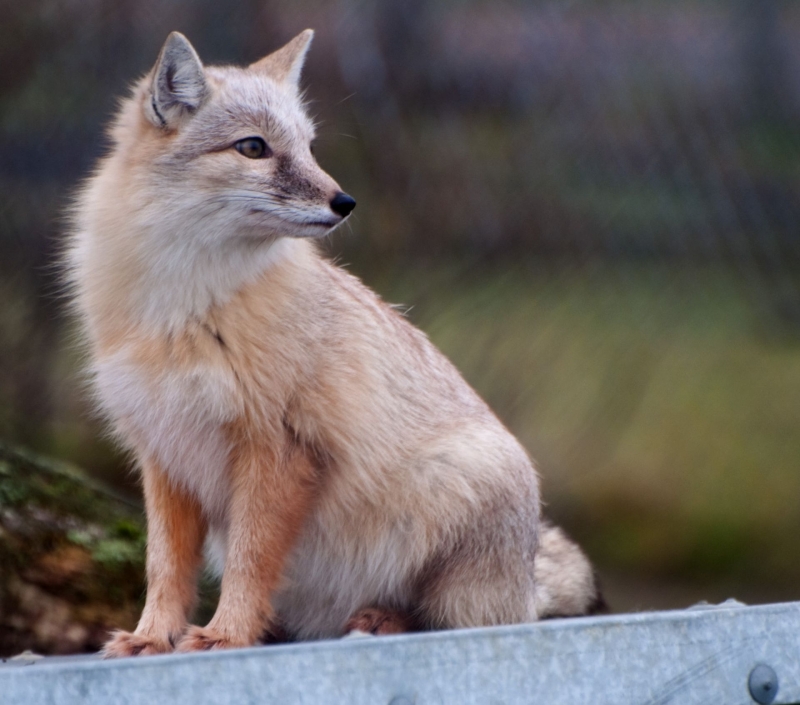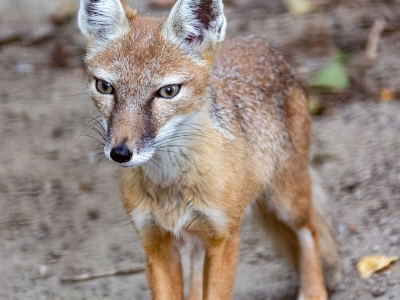Corsac fox Vulpes corsac
Animals in our sanctuary
Cor (Male)
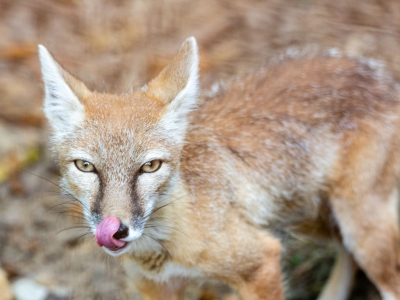
Cor, along with two companions, was kept illegally by a private individual. This is how they firstly wound up at Stichting AAP. They went on to look for a permanent home, for which De Zonnegloed was then chosen to accomodate them.
Sac (Male)
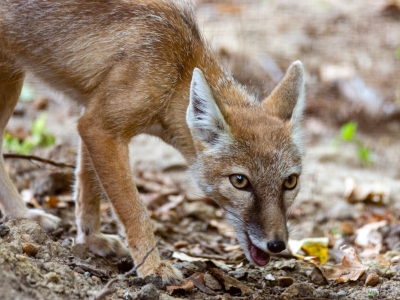
Sac, along with two companions, was kept illegally by a private individual. This is how they firstly wound up at Stichting AAP. They went on to look for a permanent home, for which De Zonnegloed was then chosen to accomodate them.
Xof (Male)
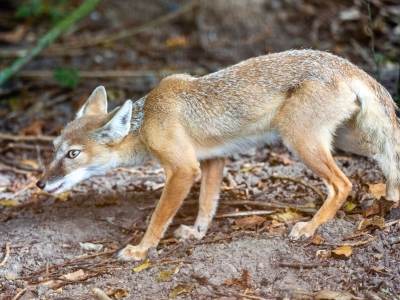
Xof, along with two companions, was kept illegally by a private individual. This is how they firstly wound up at Stichting AAP. They went on to look for a permanent home, for which De Zonnegloed was then chosen to accomodate them.
Appearance:
The corsac fox is smaller than the red fox, with a body length of around 65 cm and a tail measuring 30-35 cm. It weighs between 1.5 and 3 kg, though its thick winter coat makes it appear heavier. Its fur is gray with yellow and white tones, providing excellent camouflage in its environment.
Behavior:
As a nocturnal animal, the corsac fox is primarily active at night, but during winter and while caring for its young, it may also hunt during the day. It roams in search of food and shelter without defending a fixed territory. Occasionally, corsac foxes form small groups, which is uncommon among fox species.
Diet:
The corsac fox is an opportunistic omnivore and not selective in its diet. It hunts rodents such as gerbils, hares, and squirrels but also eats insects, carrion, and plant material, especially in winter. When food is scarce, it may scavenge for waste and is capable of surviving long periods without food or water.
Habitat:
The corsac fox inhabits the vast steppes and semi-desert regions of Central Asia. It is well adapted to these dry, sometimes cold environments and can survive in areas with light snowfall, as long as the snow does not become too deep. It avoids steep mountains and areas with high human activity.
Reproduction:
Corsac foxes are monogamous, and males help raise the young. The mating season lasts from January to March. After a gestation period of approximately 60 days, females give birth to litters of 2 to 6 pups. The mother may relocate her young multiple times between different dens. The pups reach maturity at around nine months of age.
Threats:
Wolves and birds of prey, such as eagle owls and golden eagles, are the corsac fox's primary natural predators. Due to their relatively slow running speed, they are vulnerable to attacks. Additionally, they are hunted for their fur, often with the assistance of golden eagles. While hunting has led to population declines in some areas, the corsac fox is not considered threatened. Its habitat faces little pressure from human activity.
Adopt this Corsac fox


